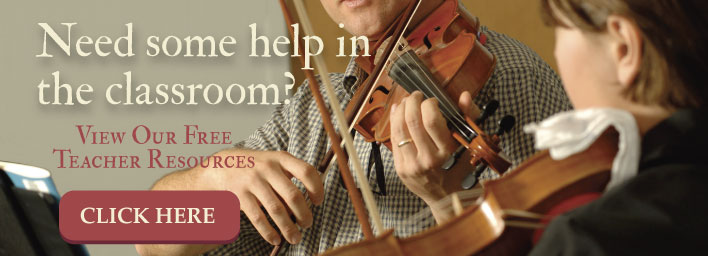How to Prevent Music Classroom Disruptions

Classroom disruptions are the bane of most teachers. And for those who teach music, the interruptions can be created in a variety of inventive ways. Your students basically have large noisemakers at their disposal; plus, when you need to work with an individual, it’s natural for the remaining students to start whispering to their friends, cutting up, and otherwise act contrary to your expectations. In fact, there are no limits to the kinds of interruptions you can be subjected to; things like assemblies, fire alarms, and half-days for holidays have a way of wreaking havoc on your lesson plans for the day.
In whatever form your classroom disruptions manifest themselves, they make it especially difficult for you to provide effective music instruction. If ignored, the problem can evolve into even greater behavioral issues that undermine your authority and lead to lasting character flaws for your students.
However, rather than take a reactive approach to dealing with classroom disruptions, experts agree that becoming proactive toward this issue yields better results for the effort. Basically, you want to curtail disruptions before they get out of hand and build strategies that limit their appearance in your music class; which of course, is easier said than done.
Naturally, you’ll want to be prepared and most likely you understand how important it is to enforce your behavior rules with consistency. However, there are a number of other techniques that you can employ to reduce classroom disruptions. These suggestions will help develop the foundation for proactive prevention, but they should also fuel your imagination so that you can create specific solutions for your various students and classes.
Build a Relationship
While none of these ideas will produce fruit overnight, remember that minimizing disruptions is a process. One which can only be accomplished successfully if you’ve taken the time to create a positive relationship with your students. By making an effort to get to know your students, who they are, their interests, and difficulties, you’ll lay the foundation that help prevent outbursts, which are often designed to test your boundaries or simply garner attention.
Work with Your Classroom Layout
Although there will be some limitations here for music educators, a classroom arrangement that provides every student with a clear line of vision to you will minimize disruptive activities. Plus, it works both ways: the students can see you, and you also have an unobstructed view of them.
Identify the Cause
This isn’t always easy to discover, but if you have one or two students who are constantly disrupting class you’ll need to try to understand the root of the behavior. Is the student having difficulty performing a certain piece of music, therefore he or she acts up to divert your attention from the issue? Some extra instruction may help. Are some of the students bored with the current material? Perhaps your class would respond better if you infused a few popular tunes into the curriculum. By recognizing the cause of the disruption, you can develop better solutions for controlling it.
Make Lessons Flexible
For disruptions that originate outside of your classroom—such as assemblies, drills, etc.—the best way to minimize their impact is to create flexible options for yourself. Being able to roll with the changes that come up from time to time will help you maximize your teaching time. For example, if you can structure your lesson plan so that the most important tasks are defined, you’ll be able to meet unexpected schedule changes with less stress.
Create a Positive Release
With younger students, their natural energy levels and developing attention spans make it difficult to remain focused for extended periods of time. When they become restless the disruptions increase. To regulate this, you may want to institute some form of healthy release. For instance, if you notice that your class is becoming distracted you can use a signal that will indicate that it’s time to move. A mechanical plush toy that dances and plays a short song works wonderfully. Explain to your kids that whenever you push the button, that’s their cue to get up and dance around.
Older students might benefit from taking a few minutes to practice calm breathing exercises or do a few stretches beside their chair and music stand. Whatever method you choose, the act of being able to release pent up energy and stress will help prevent classroom disruptions later.
You can limit the disruptions experienced in your music classroom by taking these proactive steps to prevent them. Although it will require patience and discipline, you’ll be amazed at the change in student behavior as your strategies start to deliver results.

